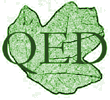
DEVON
 |
QUODITCH MOOR NATURE RESERVE | |
QUODITCH EDUCATION DEVON |
WHAT IS CULM GRASSLAND? | |
|
Unimproved pasture on the Culm Measures! There, you've got your answer!
Surely, there's more to it than that, so if you want to find out more, you'll have to read more! In Devon we have a great variety of scenery, but what causes it? To say "The answer lies in the soil" is partly correct, but how did the soil get there? We need to look even deeper.........You'll need your wellies too! If we look below the soil, we start to find the answers. Some of the answers come from the rocks beneath. As they erode or wear away, the fine particles that are left, together with the remains of plant and animal life combine to make the soil. Culm is a local name, given to rocks that lie beneath the soil in a very large part of Devon. From the River Exe valley, the Culm Measures extend westward, between the massive, hard granite outcrop of Dartmoor and the softer red sandstones of Exmoor, right through to the Atlantic coast. The area that we are particularly interested in at Quoditch lies on rocks known as the Crackington Formation. These rocks are a mixture of shales, slates and sandstones, that were laid down in Carboniferous times, about 300 million years ago. These particular rocks have given rise to acid soils that are poorly drained in most places, but in addition to this, the high rainfall in the south-west of England has made the land in this area very wet and it still stays comparatively wet, even in the driest of summers. There are some other similar areas in Britain, but only in southern Wales and south west Scotland, where the land is not known as Culm, but as Rhos pasture which is Welsh for wet pasture. On a world-wide scale, a part of north-west France is the only other closely related area, but there might be similar areas in western Ireland, north-west Spain and Portugal. Culm Pasture or Grassland has a very distinctive appearance. From the air, it is really easy to identify it. Its wildness (or maybe untidiness is a better way of describing it), colour, comparatively small field sizes and scrub and woodland surrounding the grassland make it stand out from the surrounding land. There are a wealth of plants that have adapted to living in these conditions, and because of their success, a multitude of invertebrates live there also. These plants and animals together attract yet other animals as well a wide variety of birdlife to these areas. In Culm Pasture, there is a great variety of grasses. If there is grass, you can graze animals there. Clear a few trees, clear a lot of scrub and you have a simple field. Culm Pasture is a man-made environment that has sustained people through the cattle it has fed. But space, in times past was not the problem it is today. Life went on very much the same from year to year, decade to decade and century to century. You can imagine that for people trying to farm in conditions like this, the living was not very good. Imagine it. Poor soils produced poor crops, poor crops produced poor yields, damp conditions rotted plants, so what could you grow successfully? Try producing animals. There would be more success there, but poor grass produced poor quality food for animals and so you would need more land to let your animals graze. Sheep wouldn't be very happy because in constant damp conditions, their feet rot. It seems you're left with cattle, but the quality of their milk would not give you a very good income, so beef production would be the most profitable way to use the land. When people wanted to make more money from the land, their first priority was to drain it, plough it and fertilise it, thus totally destroying it. Some people inherited Culm Pasture, but they did not want to farm it as their ancestors had. They did not want to farm. In many cases, the fields were just left and with no management, the land quickly reverted to woodland. |
|
|